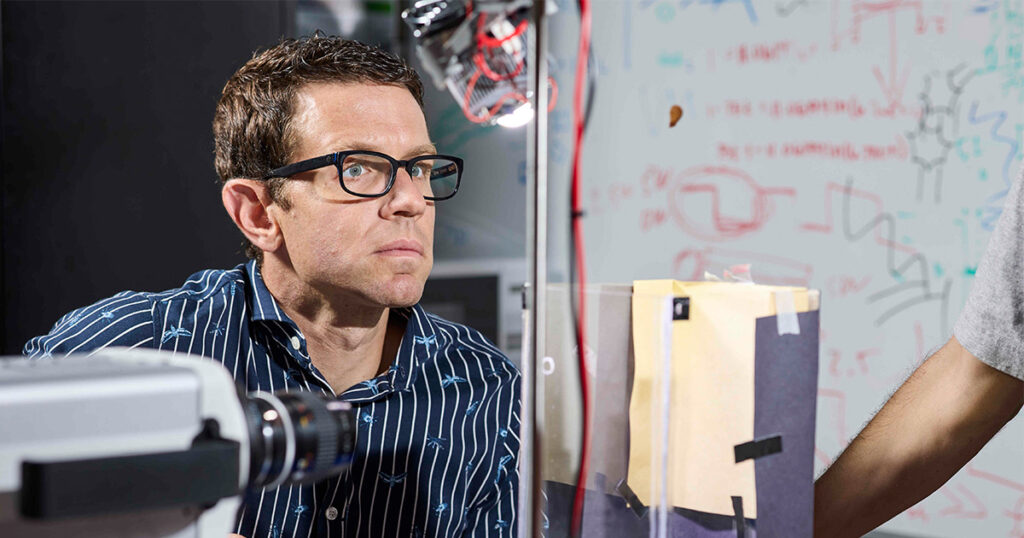Envision a maple seed freshly covered in morning dew. The wind blows the seed off the tree and sends it floating through the air. Although the seed has extra weight from the moisture, it still autorotates and falls to the ground nearly as well as if it were dry.
That is just one of the conclusions gleaned from the research of MABE Assistant Professor Andrew Dickerson on maple samaras, which are winged nutlets containing one seed. Dickerson was a co-author of the paper, “Maple samara flight is robust to morphological perturbation and united by classic drag model,” which was recently published in the journal Communications Biology-Nature.
Dickerson and his co-authors, MABE Graduate Research Assistant Breanna Schaeffer and Spencer Truman and Tadd Truscott of King Abdullah University of Science and Technology, used an innovative method to demonstrate the durability and resiliency of the maple seed.
The autorotating flight of maple seeds serves an ecological purpose. Samara-bearing trees have developed the ability to produce winged seeds to enhance proliferation. The samara wings enable the seeds to leave the parent trees, extend their reproductive reach, and enhance the chances of successful establishment by increasing the time it takes to fall from the tree to the ground.
The group tested eight different maple species by putting them a wind tunnel and recording high-speed videos that measured descent velocity, mass, rotational speed, and rotational angle. The speed of the tunnel was representative of the speed at which the seeds would descend. The group found the maple seeds have a drag coefficient of 5.99 across all species because they are so lightweight and have such a large area. By comparison, a parachute has a drag coefficient of around 1.
“That drag is in part due to a relatively large, flag wing, and because, as they autorotate, they’re generating lift,” Dickerson said. “Apply a classical drag model, like what would be used to describe the wind resistance on a moving car, was our simple but elegant way to relate the performance of different species that hadn’t been done before. We were able to show that the way we approach this problem was superior to the wing loading approach that had been done in the past.”
The research also showed that maple seeds can autorotate despite significant morphological alteration, such as an animal chewing off part of their wings or morning dew adding weight. The seeds endured mass changes greater than 100 percent while still maintaining stable autorotation. They can withstand up to 40 percent reduction in wing area before losing their ability to autorotate, with the largest wings more robust to ablation.
“We found that we could double the mass of the seed, but it would only fall about 15 percent faster,” Dickerson said. “That performance is species dependent. Some species are more robust to mass addition, and some are more robust to mass subtraction, which is done by just cutting portions of the seed. But overall, they are fantastically robust.”
Dickerson’s group is building off the recent research by studying whether maple seeds retain the same robustness if struck by rain or other falling items mid-flight.
“Basically, how do they shed that raindrop? How do they correct and resume autorotation?” Dickerson said. “The early results we are getting are pretty exciting.”
Contact
Rhiannon Potkey (865-974-0683, rpotkey@utk.edu)
